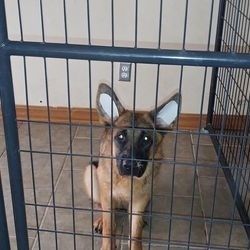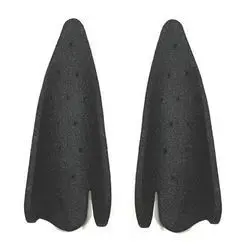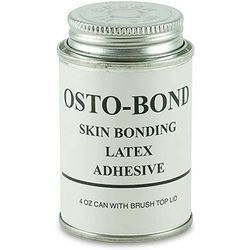General Information on German Shepherd Dogs
German Shepherd dogs are everywhere! As one of the most active dog breeds working today, you see GSDs in airports, subway stations, and even Times Square. These dogs serve as police K-9s, military working dogs, search and rescue dogs, and much more.
Have you ever thought about why this particular breed is so suited for this kind of hard work?
The breed dates back to the 1890s when it worked as a herding and farm dog. According to the German Shepherd Dog Club of America (GSDCA), the official parent club and "guardian" of the breed in the United States, the very first registered German Shepherd Dog in Germany was a "working sheepherder, requiring no training other than direction and finish to become proficient at the task." GSDs were prized for their "utility and intelligence" and later used heavily in the World Wars, demonstrating their trainability, loyalty, and courage.
The GSDCA describes the breed best as approachable, quietly standing its ground, and showing confidence and willingness to meet overtures without itself making them. It is poised, but when the occasion demands, eager and alert; both fit and willing to serve in its capacity as companion, watchdog, blind leader, herding dog, or guardian, whichever the circumstances may demand."
These qualities have been bred into German Shepherd Dogs for over a hundred years, endearing the breed to a wide public in practically every country of the globe as a companion, protector, and friend.
The all-time ACE (Awards for Canine Excellence) winning breed is the German Shepherd Dog, with 13 awards. The Awards for Canine Excellence celebrate canine heroes in appreciation for the inspiring ways in which they contribute to our lives. Each year, five loyal, hard-working dogs are commemorated for making significant contributions to an individual or their community.
German shepherd slope or straight back
Another breeder posted this. I wanted to share this because I couldn't say it any better than what was said. I even had a very reputable show breeder deny any updated pictures I sent her unless the dog was stacked. So I stopped sending her updates. I don’t stack my dogs. I think it is silly and unnecessary. I want to show the beauty of the dog itself in its natural stance and shape. Not to form it at an unnatural angle. I know of breeders that start stacking their puppies as young as 6 weeks. This is what the breeder said.
Every once in a while, we are asked if we breed "straight-back" or "slopped-back" dogs, and it makes me uncomfortable. We believe that a dog is either a good representative of the line or not, bred per standard or not. The same dog can be stacked (or photoshopped) to look very squarish or very low; each is extreme and should not be a goal. As a versatile utility dog, the German Shepherd Dog breed has several different "types, each better suited for different purposes and roles. Each type is valued and respected for what it brings to the breed, and many owners and handlers prefer one over the other. All of these types of German Shepherd dogs within the breed are unique for a variety of reasons. Physical appearance, drives, temperament, and purpose vary among the lines, but all of them are German Shepherds equally.
Get to know the German Shepherd Dog
The German Shepherd Dog is hailed as the world's leading police, guard, and military dog. However, this dependable breed is more than its 9-to-5 job. Consistently one of the United States' most popular breeds, according to AKC® Registration Statistics, the German Shepherd Dog is also a loving family companion, herder, and show competitor. The breed is approachable, direct, and fearless, with a strong, muscular body. The GSD may be many colors, but most commonly, it is black and tan.
A Look Back
The German Shepherd Dog originated in 1899 in Karlsruhe, Germany, due to the efforts of Captain Max von Stephanitz and others. Derived from the old breeds of herding and farm dogs, the first German Shepherd dog exhibited in America was in 1907. The fame associated with Rin-Tin-Tin and Strongheart, two members of the breed whose movies played on variations of the boy and his dog theme, shot the popularity of the breed sky-high.
Can you guarantee my puppy will not have hip problems?
No breeder in the world can guarantee that the puppies won't develop dysplasia, and if they do... beware. Hip dysplasia is considered polygenic and is also influenced by environmental factors. That means that it's caused by a combination of genes that may not have shown up in any litter previously. No matter the certifications in the pedigree, it is possible that your puppy could be predisposed to hip dysplasia. Treatments (both surgical and drug-based) can be done early to alleviate problems down the line. If in doubt, find an orthopedic specialist. Be wary of a breeder who says their puppies will definitely not have hip problems. OFA is an X-ray done on a dog at 2 years old that will show quality hips.
All my dogs are highly active, running, jumping, hiking, and swimming. I always encourage potential owners to come to see the health and temperament of the parents. I get preliminary xrays on the dogs to see any weakness in the hips or elbows. If the dog fails the xray, the dog will be rehomed and retired..
What is schutzhund?
Schutzhund is German for "protection dog", but it also refers to a training discipline and dog sport involving 3 phases: obedience, tracking, and protection. It is supposed to be a fun experience for both the dog and the handler. All my girls have bloodlines from champion wins in Germany for such events. Note that titles that say VA1 are considered world champions. Also, 2X VA 1 are rare champions that won the world champion TWO TIMES! Our ancestors were real German shepherds. These champions are judged on what they accomplish, not just their looks. Note: Schutzhund is a way of measuring their abilities. SCH 3 is tops. I'm not into the show where the dog runs in a circle and is judged for its beauty. These are extremely intelligent working dogs.
Will my German Shepherd puppy's ears stand?
Although some puppies' ears stand as early as 8-10 weeks, don't be concerned if your pup's ears don't stand until 6-7 months (especially pups with large ears) after teething. Some pups' ears never stand. This is known as a "soft ear". Sometimes taping is successful. "Soft ears" are a genetic trait, and dogs with soft ears should not be bred even if taping is successful. It is a disqualification in showing but does not affect the dog's health in a negative way. I have had a puppy that took until he was 9 months for his ears to stand up. The ear can be easily damaged by environmental issues as well, such as another dog in the home biting on the ear damaging the cartiledge.. this is not considered soft ear.. in my experience of raising my pack I have not had any of my dogs experience soft ear. I have experimented with ear foams because I have had owners have their dogs ears not stand up. I do not recommend anything unless I use it myself. I dont guarantee the ears standing up because of environmental issues is the prime reason their ears do not stand up.





I personally do not recommend taping. Taping can cause ear infections, so every week, literally rip off the tape, clean the ear, and put the tape back on. To me, it is painful and not necessary. I prefer foam inserts. The foam is glued into the inside of the ear and supports the cartilage of the ear, helping it strengthen with the added support. The insert falls out, and you can, if needed, put the insert back into the ear, usually about a month. A lot less painful, and I have not had any ear infections with this method.
I decided to write an article on ear support for German shepherds. I've been successful with my own pack by massaging the ears and helping them form correctly. I have seen many people get these dogs and be very harsh with them, rubbing and pulling on their ears. I had one couple that I told that the ears are very delicate and that you need to be very careful with them while the puppy is young, or you can unknowingly break the cartilage in the ear, and the ear will not stand up. They were surprised that I said that. In a lot of people's minds, you have this big, strong German shepherd, and I am just being overprotective of the dog's ears. The ear is a growing piece of cartilage that needs to be delicately worked with until the dog is older and the ear is obviously strong enough to support itself. I have had five dogs over the years whose ears didn't stand up for their owners. For whatever reason, they didn't stand up, and I wanted to research how I could help with this. One thing the owners must understand is to be gentle with the ears; honestly, mostly, leave them alone unless you want to massage them in an upward position to work the cartilage to stand. I have had dog ears stand up at 9 months and stay up. But instead of working with the ear, I wanted to try to figure out something that worked well with the dog as well as the owners. One of my dogs had an operation, and I kept him in a cone for about a month, forming his ears cone-like towards his head.
Going to the vet, he taped the ears. Every week we had to rip off the tape, clean his ears, and reattach the tape. It was such an awful experience that I would rather my dog have floppy ears than do that again. Taping can cause ear infections, and overall, it is not something I would do again.
I got a few of my dogs in California and met up with a breeder. I am always talking to breeders for more information on how I can take better care of my pack. The breeder told me if the owner told her at 6 months that the dog’s ears didn't stand up, she would insert an ear support in the ear, and she showed me how to do it. The breeder said there was no guarantees the ears would stand up. She had 2 dogs that was in kennels with soft ears. The ear foam insert is like a splint. It helps firm up the cartiledge to stand up I liked the method so much that I wanted to try it to see how it worked and if it was something I could support and tell people about. Over a year later, I got 3 pups. By 6 months, both Mitzi's ears were floppy, and usually, I start working the ear to start strengthening the cartilage. I added the foam instead. Willow had one ear that was floppy at 7 months. I added one piece of foam to the ear that wasn't standing. Through a week-long trial, I noticed that Willow's strong ear flopped with the other ear supported. After about a week and a half, the foam fell out. So I cleaned the ear out with alcohol and noticed that when I put the foam back in between the alcohol and the glue, it had a slight burn to it. So make sure to let the alcohol dry. With the foam falling out, we carefully added more glue. Now, the trick to this method is reading the instructions on the glue. You need to put glue on the ear and let it sit for 5 minutes before putting it in. During this time, you need to keep the ear formed; otherwise, the ear will stick together while the glue is drying. Make sure when adding glue to the ear, you look at where the ear needs the most support, and when you add support, you get it in the right spot to help the ear. Be very careful to add glue without it running into the ear... It is a pretty thick glue, but you do not want any to run into the ear. With any method like this, you can damage your dog's ears, so please, if you need more professional help, go to your vet and ask for help. Hopefully, your vet will help; otherwise, just leave the ear alone. The ear does not change who the dog is, and it is just cosmetic...
After we added more glue to the form and ear, we put the foam back in the ear. Willow's ear flopped, so I decided to add the foam to both ears. One thing I noticed, which I mentioned earlier, is to make sure to note where the ear needs the most support. If you don't put the support in the right spot, you will need to pull the support off to reinstall it. We had to take off the foam after Willow noticed it didn't support the ear the way we wanted it to. After cleaning the ear with alcohol, I did not install the foam right away because of the burning it caused between the glue and the alcohol. It was much better to let it dry for a few hours before installing the foam again. We kept the foam for about 2 months. After the first few weeks of learning how to use the glue and cleaning the ears, the foam didn't fall out. So, I decided to pull off the foam after about a month. The total time with foams was 2 months. Keep in mind that this is with 2 dogs whose ears I feel would have stood up in time; they stood up and flopped, which is normal for their ears.
Throughout the entire time of the procedure, the ears did not get red, infected, or irritated. I am not a vet, so keep that in mind, but I do not see why this method wouldn't work on a young adult dog. You are basically splinting the ear to help strengthen it, so it can stand on its own. They are not considered adults until age 3, so they are still growing and maturing during that time.
The forms are available online at Redline K9 Ear Support, or I experimented with getting breathable, firm material from Joannes. They sell a foot-squared material or even a thin foot-squared foam material that will work, but with my lack of experience, I feel it is better to buy the actual formed piece shaped for the German shepherds' ears. The form costs around $20. I bought it on Amazon, but you can get it in certain stores. Osto-bond skin bonding glue. Also, with anything like this, you do not know if your dog can possibly have an allergic reaction to the glue or even the form you get. Keep an eye on your dog. Look in the ear for any swelling or redness. You may get a little redness the first day. I did not. The main reaction I got was that they didn’t like the smell of the glue, and I got a mild reaction when I cleaned the ear with alcohol and put glue on after cleaning the ear. After letting the glue sit for 5 minutes, add the form to the ear and let it sit for another 5 minutes before letting the dog get up. At least with my dogs, they scratched a little, but after a few minutes, they were comfortable, maybe slightly annoyed. Something was in their ears. After about 15 minutes, they were ok with the foam.There is no guarantee on the ears standing up.. Environmental issues, diet, other dogs chewing on ears.. there is alot of reasons the ears wont stand up.. At 6 months if you let me know you are concerned I will support the ear the first time for free. The owner will need to buy 2 ear foam supports before I will support the ear.. it is a waste of time supporting the ear if you dont have additional supports incase they fall out or another dog takes them out.. They need to be left in a minimum of a month.. telling me at 10 months more likely the ear foam wont be successful.. the ears on average will stand up by 6 months... 6 months is when I tell owners to support the ears if any concerns...
Research
Make sure to research the German shepherd breed before deciding on getting one. Look up the genetic issues that they can get. For common issues of health, such as allergies, breeders are not going to just start a conversation with you. German shepherds are prone to skin and ear allergies. I have a few dogs that have allergies. The allergies a few dogs have is a yeast infection on the skin or ears. Mostly in the ears. A few weeks of keeping the dog clean with an antifungal, antibacterial shampoo has worked very well with me for skin allergies. For ear infections, I buy antifungal, antibacterial ear wash and, on occasion, will get drops for the ears from the vet. I do not retire a dog with simple allergies. My pack is examined by several vets at times during the year; if at any time the vet recommends the dog has genetic issues that should not be bred, I immediately retire them and find them a home. For genetic disorders such as hip dysplasia, seizures, and degenerative myelopathy, dogs should not be bred. Research the temperament, drive, and energy it takes to own one. Make sure you are prepared for any health issues, temperament, and overall issues a German shepherd can bring to your home. Getting from any breeder, no matter how well known they are, still has pups with possible genetic issues. Do not get a dog expecting perfection. Getting from a reputable breeder limits the possibility of getting genetic disorders but does not guarantee that. Breeders that guarantee the hips and genetic disorders of the dog will put the dog down and give you a new pup. I am not that kind of breeder. I do my best with the vet's advice on the health of my dogs and the health of my pups to limit any issues they may get. I keep records of owners letting me know of any health issues the dog has and keep an eye on possible genetic issues between my breeding pairs. I discuss possible issues with my vet in deciding if it's an issue that a dog needs to be retired or just not breed with a certain other dog. I make it very clear to my owners that even though I do my best to have happy, healthy, well-balanced dogs, my main focus for my pack is forever homes. These dogs are abandoned way too often because of health issues, temperament issues, and lack of training issues. Do not get a dog from me expecting perfection in the dog. Getting a dog from me, expect someone with experience in health issues for support, a trainer dedicated to keeping your dog in its home, guiding you in the right direction for training, and being an overall support system for you and your dog.
Parasites
Parasites: Mainly giardia, occasionally coccidia…
Over the years as a breeder my main health issues has been Giardia. With a lot of different vets over the years different methods and so forth it can really be difficult. I have talked with a lot of different breeders, Akc inspector, k9 handlers, specialist vets and so forth. I had one k9 handler tell me that he would take his dog to the training with the dogs in kennels and his would come back home with giardia.. I had a specialist vet tell me in his opinion majority of people and dogs carry giardia and don’t know it. He also told me having such a large group of animals together it is almost impossible to eliminate parasites. It will always be difficult with any large group whether people or animals.. the biggest issue with parasites is with such intelligent animals they eat poop which is the biggest problem with getting rid of it.
When I have pups is when I have the biggest spread of giardia. I even deworm mom a week before she has pups and a lot of times this will get the litter to be clear but not always. I have tried not giving mom dewormer because honestly I don’t like giving the moms anything when they are ready to have pups but it does protect the pups.. I have had entire litters not have it with no issues then I have pups that get it and I can clear it before they go home and I have had pups that go home and no matter how much I deworm them, sanitize their kennel and constantly change bedding through out the day they still go home with it. My main expense as a breeder is treating parasites. All my litters are treated for giardia, coccidia and basic wormers.. I use toltrazuril which is extremely effective against coccidia. Rarely have I had pups go home with coccidia since I started using it.. (recommended by a specialist) Pyrantel which is for basic round and hook worms, and fenbendazole for giardia. Occasionally I will give metronidazole which is an antibiotic effective against giardia. But I haven’t seen good results from that.. Using metronidazole with fenbendazole is well used with a lot of vet offices. I also use a probiotic with the deworming..
With constant research nothing in the United States eliminates giardia 100%. It is spread all the way across the United States and even in the eastern states they call it Beaver Fever. I do my best to keep my kennels clean, sanitized, free of flies which is a huge carrier of it, All stool is cleared twice a day, with puppies 4 to 5 times a day… Pups will get a weekly bath starting at 4 weeks to keep any parasites of skin and coat..
The best thing for pups is getting them away from the litter in a clean environment, keep them bathed, giving them a probiotic and dewormer when they go home..I recommend a 7 day treatment of fenbendazole, this is a step I do when I bring pups into my home, immediate cleaning them from the environment they came from and a week of dewormer. You can buy Panacur (fenbendazole) at any store that sales dewormer.. It does not have to be Panacur… Panacur is a name brand that vets recommend. The name of the dewormer is fenbendazole… this dewormer is the main dewormer to cure giardia. Pumpkin is also awesome at helping your new dog or pup with sensitive digestion system with their new home. German shepherds have the most sensitive digestion systems I know about. Ive had a lot of different breed dogs over the years the german shepherd is the most sensitive on digestion I have been around. This is one of the main issues I have had to retire several dogs over the years is because their digestion issues where pretty bad and test after test ran on them and nothing was found wrong… they just always had runny stool.
Be aware of this whether you get a pup from me or someone else. They do have very sensitive systems and research it, understand how to regulate their food, understanding stool what is good and what is extremely concerning.. Watery stool is very concerning. Not an immediately vet visit if you only see it once but it is a warning sign something is wrong, your dog may have ate something bad, has a pretty bad case of parasites… parvo etc…. soft stool I keep and eye on. If I see it for more than 3 days I will deworm the pack.. unless it is only one dog. Then I will separate the one dog and watch closely for any concerns, if it doesn’t get better after 3 days I will take a stool sample to vet.
Watching the stool of your dog and its eating habits are the most critical concerns to watch for to keep your dog healthy and happy
Breeding Rights
I will only give breeding rights to established, reputable breeders that guarantee taking dogs back and taking responsibilty for the life of all their dogs. There will be a contract signed. I take my dogs lives very seriously and do not add to the overwhelming, overcapacity of shelters and rescues.. all my dogs are returned to me and I take responsibilty for the life of all my dogs. I expect any breeder that gets a dog from me to be just as dedicated to the dogs.. I do not guarantee testicles dropping, puppy will need to be picked by vet recommendation both testicles are there if specifically getting a breeder otherwise the dog will need to be neutered at owners expense.. I do not take any responsibility on vet costs once puppy leaves my home..